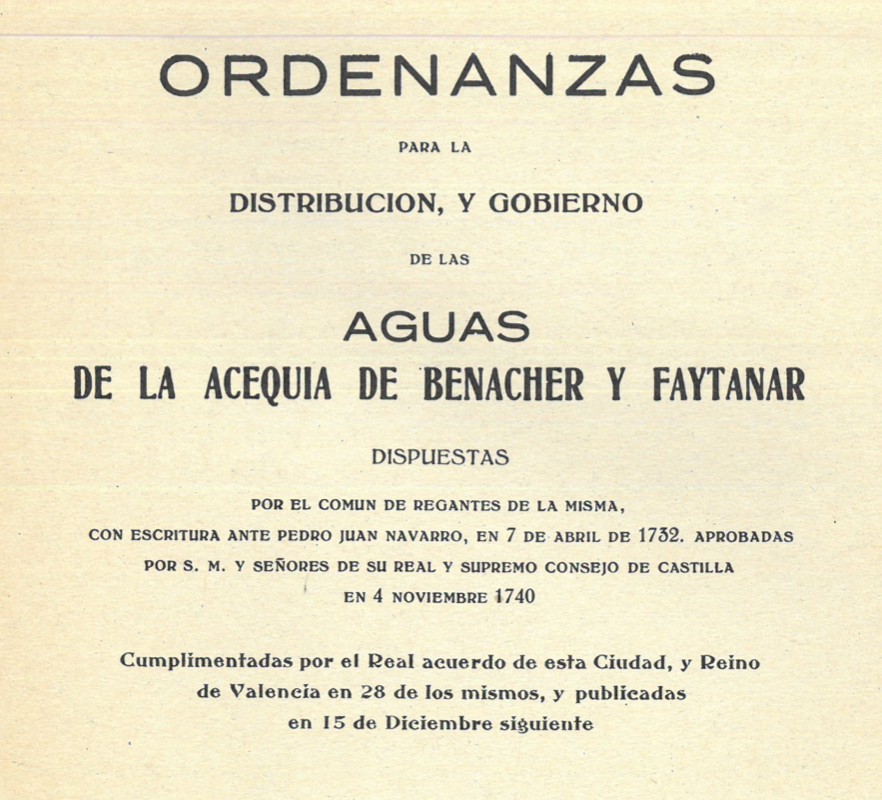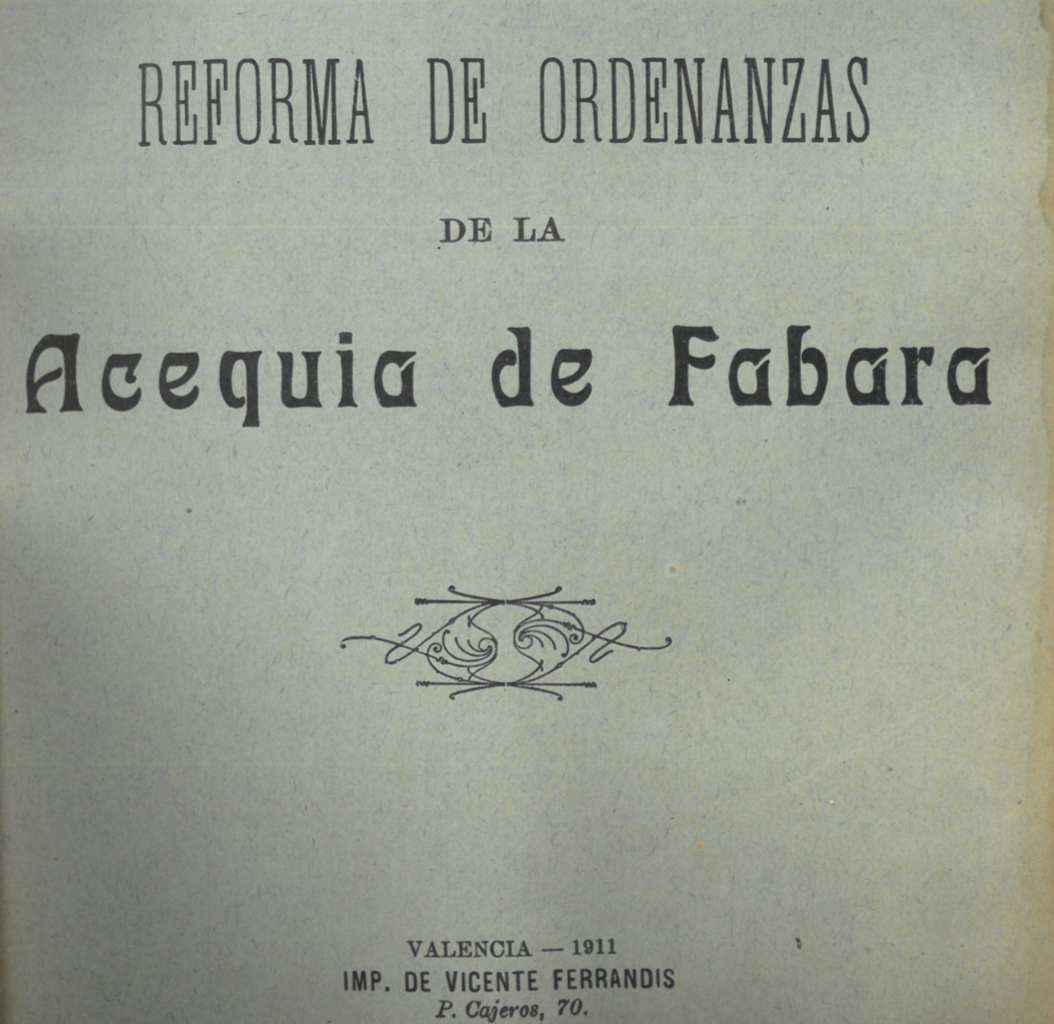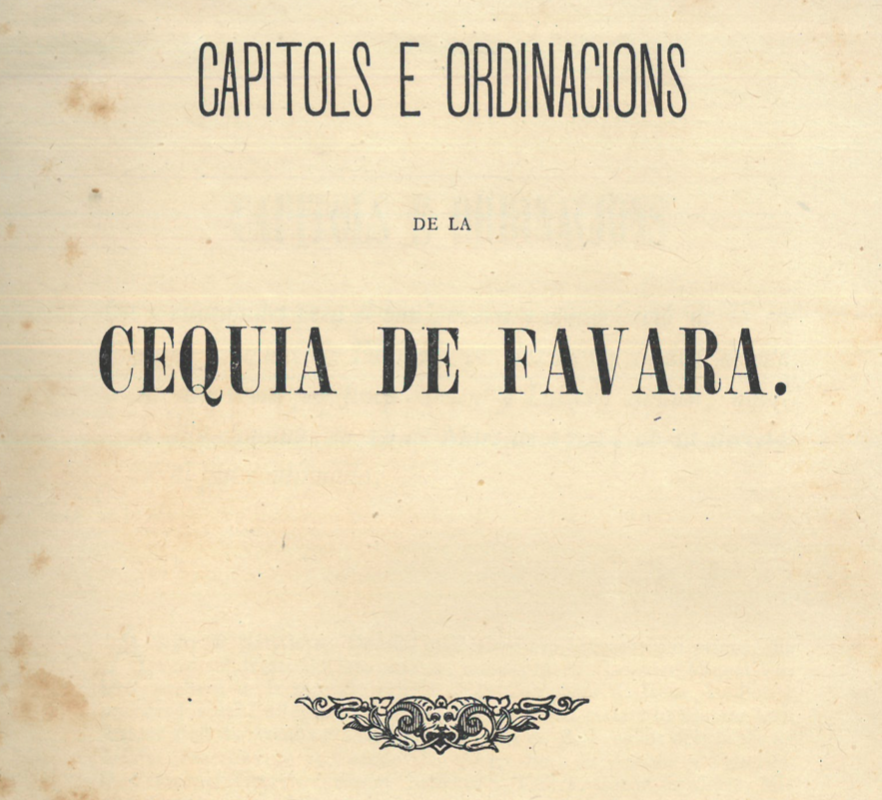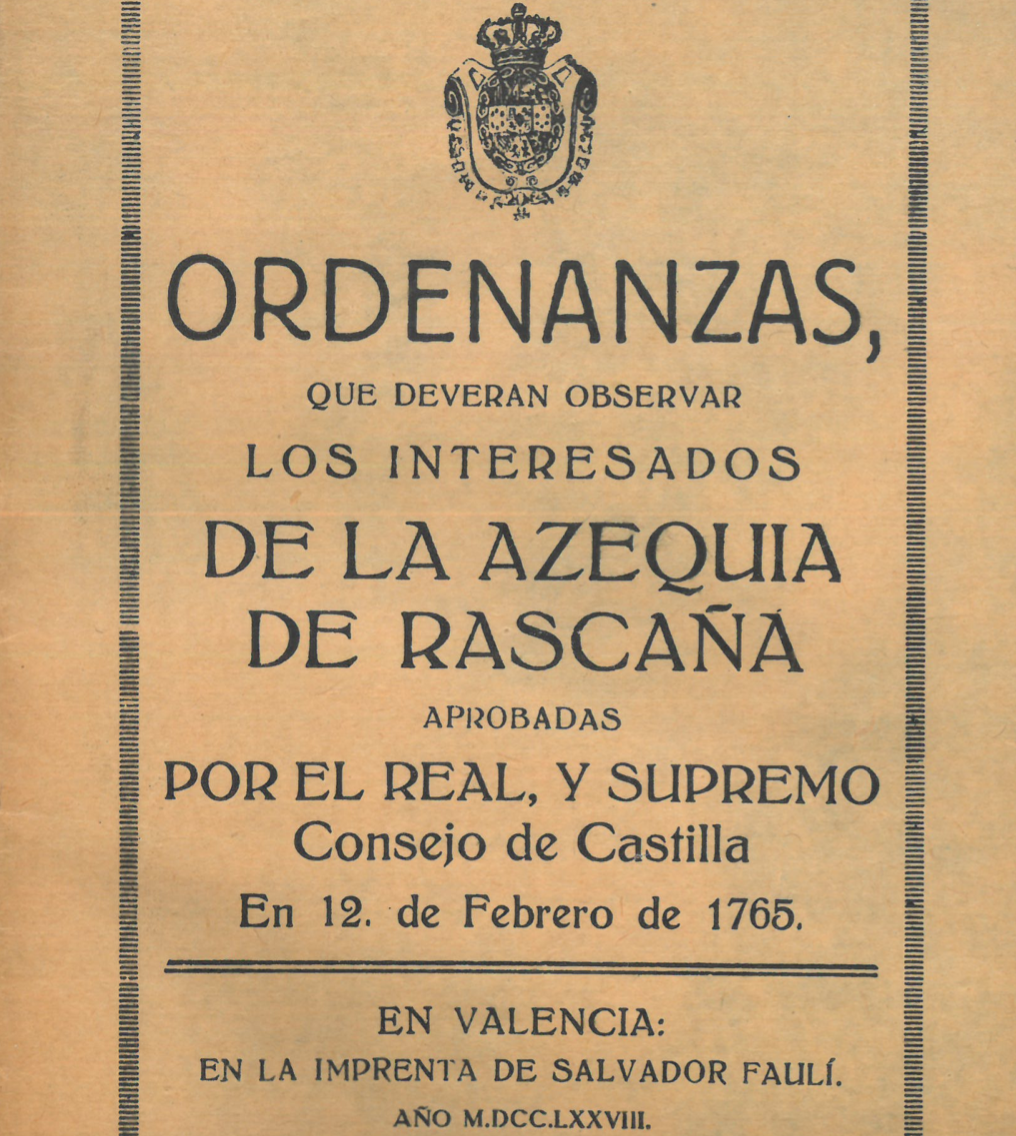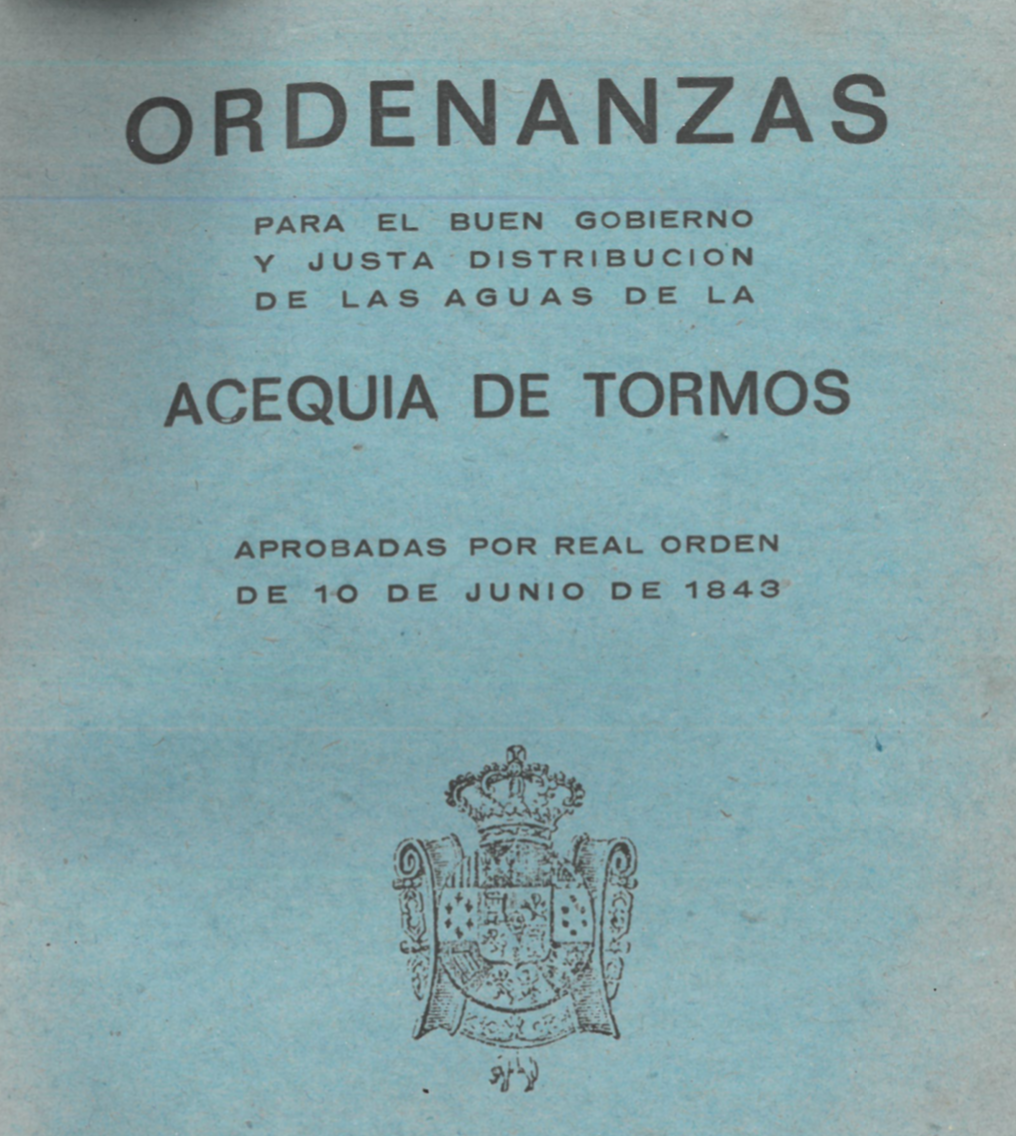A representative historical documentation of the work of the Horta de Valencia is that of the organization of its irrigation through the different communities of irrigators that traditionally conform it. Undoubtedly, the first and most relevant material and social testimony of this organization are the ordinances of these communities.
This regulation controls the functioning of these communities at an internal level. Among its chapters, sometimes hundreds, there are details of its institutional organisation, government positions and functions of each, as well as representation before other institutions. It also includes details on their economic operation and form of financing, although a relevant part of its content is related to the rules of behaviour of the farmers who are part of the Horta to manage and distribute irrigation water. Logically, these are complemented by the enumeration of the infractions that could be committed and by the corresponding sanctions.
These ordinances of the nine irrigation communities of the Horta de Valencia, the eight of the Tribunal de les Aigües (Rovella, Rascanya, Favara, Mestalla, Mislata, Tormos, Quart and Benàger-Faitanar) and the Reial Séquia de Montcada have not always been the same, and have changed over the centuries since the Medieval Age.
The date of the oldest one is unknown, but by indirect references in archival documents, we know that they go back as far as the 13th Century. Moreover, the medieval ones do not seem to be finished or complete ordinances as we know from more recent centuries. In practice, the complete texts that have reached us are from the 17th and 18th Centuries, depending on the case of one or the other ditch. For this reason, the oldest texts are written in Catalan, while those of the 18th and 19th Centuries are written in Castilian, the official language of the time.
In some cases, these ordinances were reformed in the mid-19th Century, such as those in the Tormos irrigation canal. From a historical point of view, it is interesting because it allows us to compare those used in a society in which there is no longer feudalism with the oldest, still framed in a society politically governed by feudalism.
It is also significant to note that the communities of the Horta de Valencia have maintained these ancient rules until today despite legislative changes when the organization of irrigation from the administration of the State to the late nineteenth and early twentieth century. For the same reason, the ordinances of 1600 and 1700 are still used today, depending on the case, with their past language and, in some cases, with reference to social institutions that no longer exist. In other cases, such as the value of fines for infringement, what the communities and the Tribunal de les Aigües de la Vega de Valencia do when it imposes an economic sanction is to convert the monetary value of 200 or 300 years ago to its current proportional value in euros.


